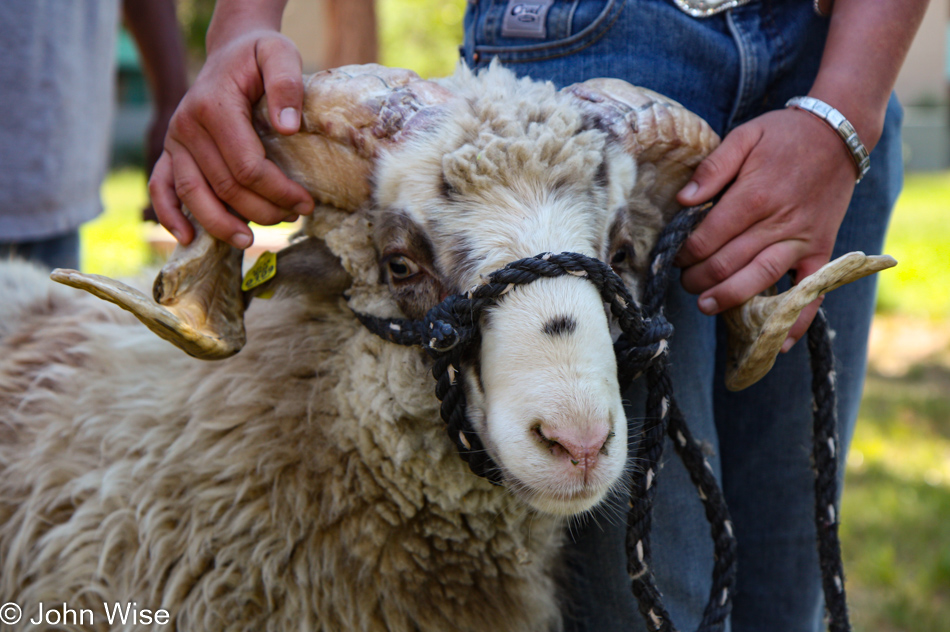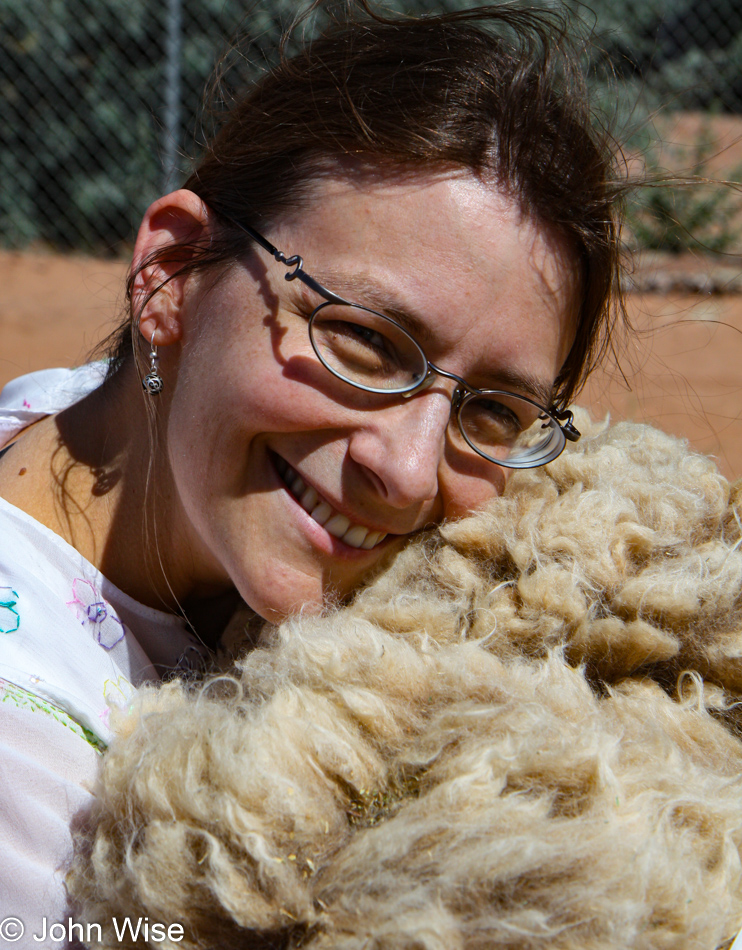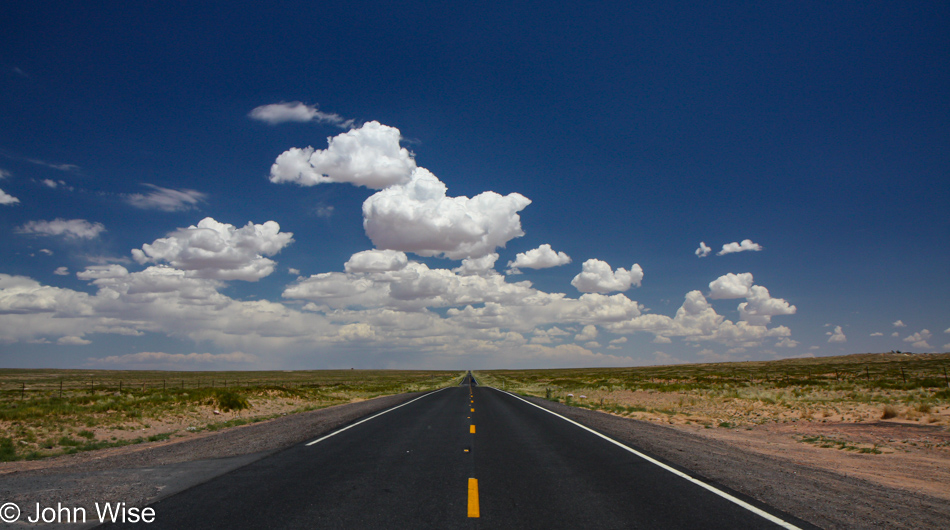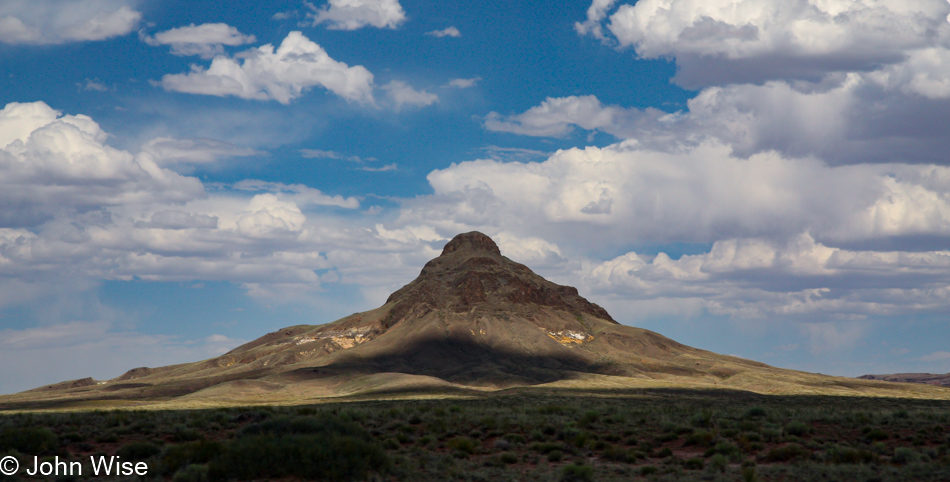
On our way to Tuba City on the Navajo Reservation to attend the Sheep is Life celebration, we drove north on Arizona 17 through Flagstaff and up Highway 89.

It was on this latter road, and just after entering the Navajo Nation, we stopped for this photograph. I like the picture as a reminder of a tree post and barbed wire fence that looks oh-so normal here in the desert Southwest but would be foreign to most people in the Eastern United States and surely to the majority of people residing in Europe.

We’ve arrived in Tuba City at the Sheep is Life festival, and of course, we are seeing sheep.

These churros are the dominant breed out here on the Navajo Reservation, where not only is their fleece used for blankets, rugs, and dresses, but their meat also figures prominently in the Navajo diet.

This here is raw churro fleece with some beautiful coloring; it’s about to be ours.

There was little chance Caroline would leave without a bit of new fiber to serve her addiction. I must admit, the churro fleece she is holding was my suggestion, almost an insistence that she takes it. At some point in the future, Caroline will wash the lanoline out of the fleece. That is, of course, if she can ever stop smelling the thing, she loves the smell of lanoline. From there, it will be time to start spinning the fibers into yarn, which will hopefully find its way into a Navajo rug she or I will weave.

After visiting the Sheep is Life celebration, it was time for a bite to eat. A helper at the information booth directed us towards the local flea market upon hearing that I would have to find myself a roast mutton sandwich before we left the reservation. Tuba City is a small town, making finding the market a quick process.

Before doing any shopping we beelined to the busiest, smokiest tent and got to ordering. Checking out the grill, I recognized a wrapped something-or-other that I just knew had to be ach’ii. We were told of ach’ii years ago by our friend Dion Terry, who wanted us to visit his grandmother’s place on the Navajo Reservation to stay in a hogan and try this Navajo delicacy. Ach’ii is a strip of mutton fat wrapped with a string of intestines (click here to see how it is made). This was as good a time as any to try it, a really good time as a matter of fact because I spied a small piece and the cook let Caroline and I have it. I suppose one would have to already love mutton to like this, which I do and so I thought it was pretty darn good. That’s peppers and mutton on the grill being prepared for my roast mutton sandwich served on a hot piece of fry bread. After our yummy lunch, we shopped at the flea market tables, buying a bag of local apricots, a small loaf of homemade banana bread, and some dried multi-colored corn.

After the festival and lunch, we visited the Tuba City Trading Post, established in 1870. In the general store at the back, we bought more wool that we will both use in our Navajo weaving projects.

We’ve been to many places across America but there’s something unique about these wide-open vistas, especially when some little fluffy clouds are present when out on northern Arizona Indian reservations.

Had we known that the banana yucca fruit was edible, we would have gobbled up one.

While sightseeing out here, we caught this sight worth stopping to stare at. There’s something wonderful about watching animals wander the land outside of a corral or cage that inspires us to witness their freedom. An added bonus at the end of spring and the beginning of summer was that the herd was running with a couple of foals. The location was on Road 264, east of Tuba City, on our way to Kykotsmovi Village on Third Mesa.

First of all, my sincere apologies to the Hopi people for taking this image atop one of their mesas, but I’m so profoundly in love with their heritage, architecture, and the environment they’ve lived in for more than 2,000 years that I simply needed a couple of memories to travel with me into the future. I understand that I wasn’t being considerate of their request not to take photos on the mesas, but it is not my intent to exploit even a grain of sand regarding their people or lands.

You are looking southwest; on the hilltop on the right is Third Mesa. I humbly dream of someday having the opportunity to photograph (with permission) the Hopi Mesas, as they offer an incredible amount of history and beauty for those who can see it.

This concludes the visuals of this awesome experience up north.
Hi John…yes, it’s your favorite Starbucks barista, well maybe not your favorite…my little one is sleeping so I had a minute to sit and check out the farm web site and all of your fantastic pictures. I was blown away by the beauty of your pictures, who would have know that veggies were so photogenic! Thanks for sharing, see ya soon…
Nicole